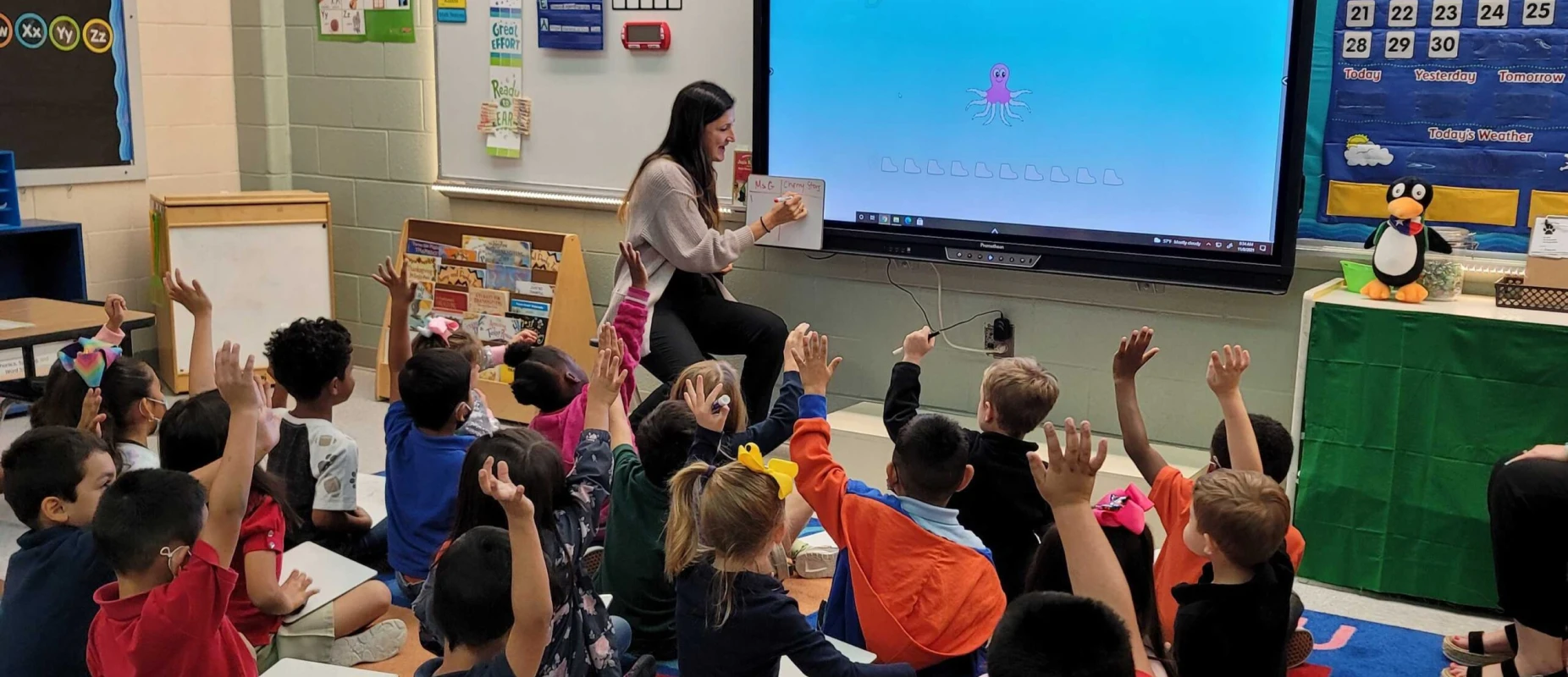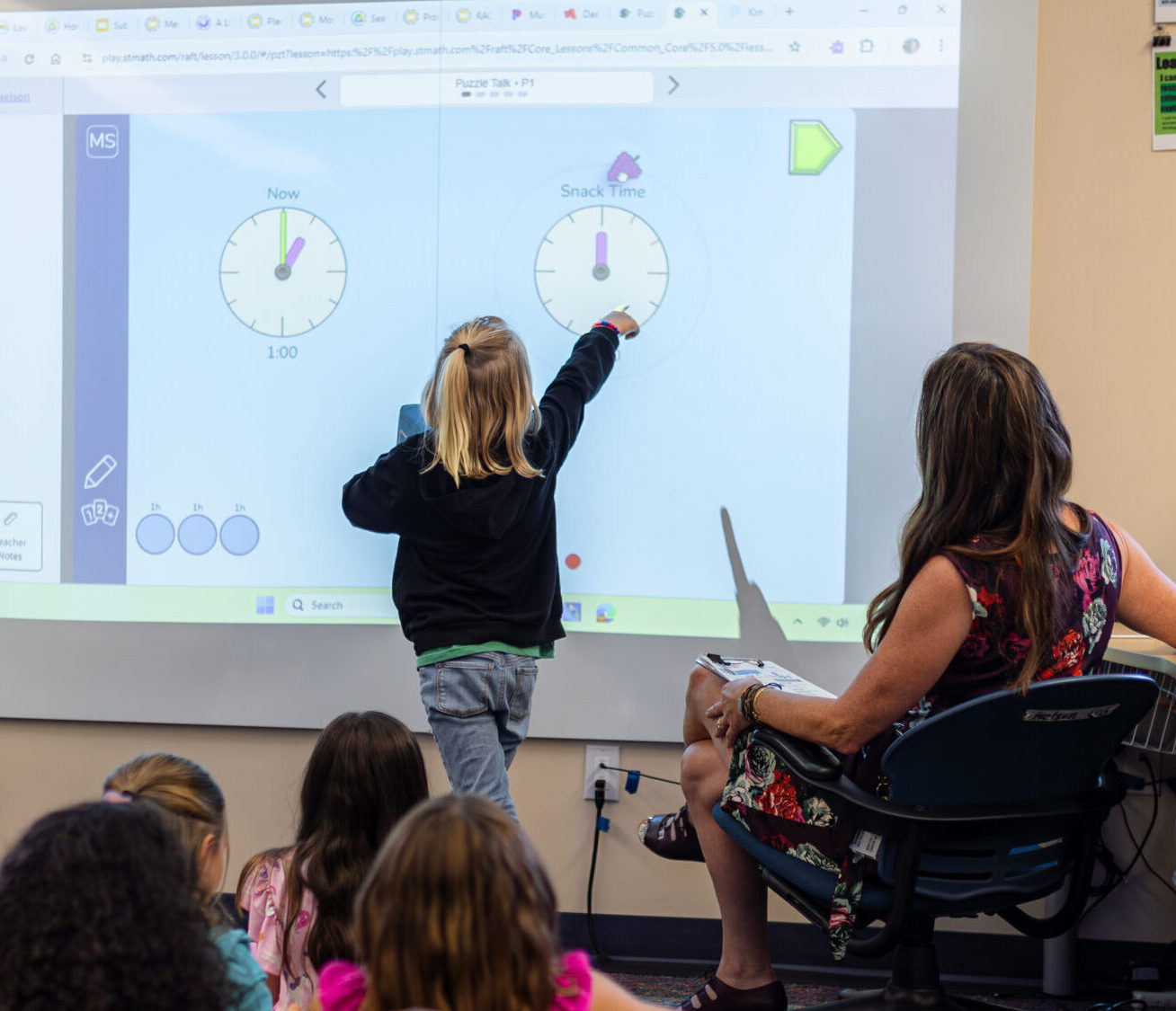Mathematical Discourse
This is Math Class: Redefined
A Classroom Alive with Collaboration, Curiosity and Confident Problem Solvers

Mathematical discourse transforms how students learn math—turning classrooms into active spaces for exploration, communication, and connection.
What You Hear
Students explaining their reasoning, challenging each other’s thinking, and celebrating breakthroughs—together.
What You See
Students embracing productive struggle, using gestures to illustrate ideas, and lighting up as they uncover insights.
Discourse doesn’t just spark engagement—it supports classroom management, too. Teachers become facilitators of learning, guiding students to stay focused, resolve challenges, and celebrate growth.
Mathematical Discourse in Every Classroom
At MIND Education, we believe discourse is a catalyst for meaningful math learning. But it’s more than just talking—it’s about creating space for every student’s thinking to be seen, heard, and valued.
Our visual, game-based approach ensures that all students—not just the ones who raise their hands—can participate meaningfully. When learners see math visually first, they can enter the conversation on equal footing, justify their thinking, and grow their confidence.
Discourse isn’t about volume—it’s about voice. It helps every student feel like their ideas matter, including the ones who’ve learned to stay silent.
By building these inquiry-driven moments into everyday instruction, we help educators turn math class into a space where students think critically, communicate clearly, and begin to see themselves as mathematicians.
Why It Matters
Mathematical discourse does more than get students talking—it changes how they think,
learn, and connect.
Deepens Understanding
Students make sense of math by explaining their reasoning, defending strategies, and hearing new perspectives.
Builds Critical Thinking
Verbalizing ideas helps students clarify their thinking, revise misconceptions, and strengthen reasoning.
Fosters Collaboration
Discourse turns math into a shared journey—students learn from one another, challenge ideas, and build meaning together.
Drives Engagement
When students are invited to think, speak, and explore, math becomes active, joyful, and relevant.
And perhaps most importantly: discourse creates space for every voice. Even the quiet thinkers. Especially the ones who’ve never seen themselves as “math people.”
Ignite Learning with Mathematical Discourse Podcast Episode
Ki Karou from MIND Education joins The Learning Counsel to explore how mathematical discourse shifts classrooms from passive to interactive.
Puzzle Talks:
Bringing Math to Life
What Are Puzzle Talks?
Puzzle Talks are guided classroom conversations based on ST Math puzzles. These teacher-facilitated discussions help students verbalize strategies, explore different approaches, and reflect on the “why” behind the math—not just the answer.
They’re short. Powerful. And built to bring every student into the conversation.
Why They Work
- Accessible to All Learners: Visual puzzles provide an entry point for every student, regardless of language or background knowledge.
- Deepens Mathematical Thinking: Students go beyond answers to analyze, justify, and make sense of their strategies.
- Fosters Peer Learning: Encourages collaborative dialogue and shared discovery—building understanding together.
- Teacher-Friendly: Easy-to-use prompts and guides help educators facilitate meaningful discussions that align with instruction.

Try it in Your Classroom Today for Free
Bring meaningful math conversations to life with free Puzzle Talks for Grades 1–6.
These ready-to-use resources offer step-by-step guidance to spark collaboration, deepen thinking, and bring a sense of joy and connection to math—for every student.
Start transforming how your students think, talk, and love learning math—today.
